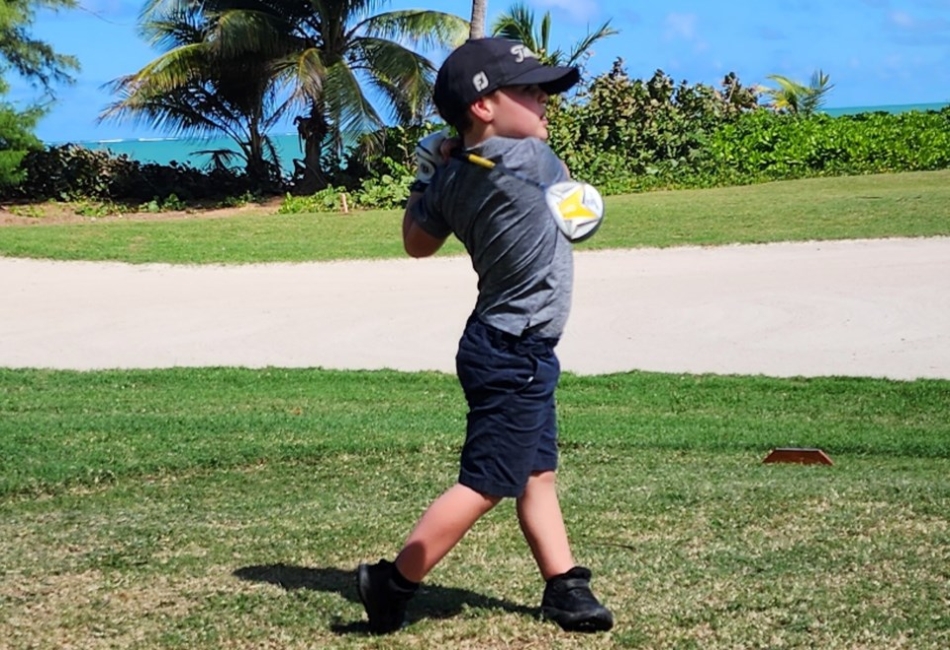Golf isn’t just for adults in polos and visors—it’s a game of patience, focus, and joy that can benefit kids in remarkable ways. Teaching golf to children introduces them to a sport that promotes discipline, coordination, and sportsmanship. But more importantly, golf can be a whole lot of fun when it’s introduced in the right way.
If you’re hoping to tee up a love for golf in your little one, here’s how to make the experience enjoyable, engaging, and full of big swings and big smiles.
Start with the Fun, Not the Fundamentals
When introducing golf to kids, resist the urge to dive straight into the technical aspects. While grip, stance, and swing are essential, it’s more important to make the game feel like play rather than a lesson. Instead of strict drills, start with fun challenges like hitting a ball into a bucket or aiming at colorful targets on the lawn.
Use plastic or foam balls for indoor play, or let them “putt” into household objects like cups or containers. The more creative and playful you get, the more likely your child will develop a genuine interest in the game.
Choose the Right Equipment
Children need equipment suited to their size and strength. Avoid handing them your adult clubs—those are too long and heavy, and they’ll only frustrate your young golfer. Look for junior golf sets, which are designed with lighter materials and shorter shafts to make swinging easier.
Even better, let your child help choose their own set. Having their very own golf clubs in their favorite color can spark excitement and create a sense of ownership in the sport.
Keep Lessons Short and Sweet
Kids have short attention spans, especially when trying something new. Rather than hour-long sessions, keep practice or playtime to 15–30 minutes. A few fun swings, a bit of putting, and a celebratory high-five are often all it takes to make them look forward to the next time.
If you notice signs of boredom or fatigue, wrap up on a high note rather than pushing through. Ending a session with a smile is more valuable than mastering a skill in frustration.
Turn Every Swing into a Game
Kids thrive on games, so bring that energy into golf practice. Try activities like:
- Target practice: Place hula hoops or cones on the grass and award points for hitting inside them.
- Obstacle putting: Create a mini-golf course in your yard with tunnels, ramps, and decorations.
- Longest putt challenge: See who can roll the ball closest to a line without crossing it.
Scoring systems, silly prizes, and friendly family competition keep things lighthearted and fun.
Teach Life Lessons Through Golf
Golf is more than a game—it’s a gateway to teaching valuable life skills. Through the sport, kids can learn patience, perseverance, etiquette, and how to handle wins and losses with grace. Encourage them to take turns, shake hands, and cheer on others, even in casual backyard games.
As they grow older, these early experiences with golf can translate into character-building lessons that go far beyond the green.
Celebrate Progress (Not Perfection)
Kids don’t need to master the perfect swing to enjoy golf. Celebrate their effort, not just the outcome. Did they hit the ball for the first time? That’s a reason to cheer. Did they stay focused during a practice session? Praise their attention.
Taking photos, keeping a fun “golf journal,” or recording short videos can also help track progress in a positive way. These moments serve as great reminders of how far they’ve come—and how much fun they’re having along the way.
Make It a Family Affair
A great way to keep kids excited about golf is to turn it into a fun family bonding activity. Spend time together at the driving range, enjoy mini-golf outings on the weekends, or set up a backyard putting course for casual evening play. Better yet, consider adding a golf simulator at home—it’s a convenient and engaging way to practice year-round, rain or shine.
When you’re actively involved, you not only motivate your kids but also create positive memories around the sport. By making golf part of your family’s routine, it becomes more than just practice—it becomes a cherished tradition.
Keep the Pressure Low
Lastly, remember that not every child will grow up to be the next Tiger Woods—and that’s perfectly fine. The goal is to introduce them to a lifelong activity that promotes movement, mindfulness, and fun.
Avoid pressuring them to perform at a certain level or to keep up with others. Let their enjoyment lead the way, and you’ll nurture not just a better golfer, but a happier child.
Final Thoughts
Golf can be a fantastic experience for kids when approached with patience, creativity, and joy. By focusing on fun rather than form, and on memories rather than metrics, you’ll help your tiny golfer take big swings toward a lifelong love of the game.
So grab those mini clubs, head to the yard or the course, and let the fun begin—one swing at a time.



